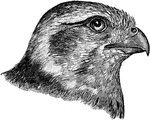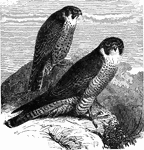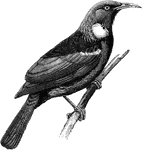Clipart tagged: ‘aggressive birds’

Prairie Falcon Head
"Falco mexicanus. American Lanner Falcon. Prairie Flacon. A medium-sized species, distinguished from…

Two Lanner Falcon
"Falco mexicanus. American Lanner Falcon. Prairie Flacon. A medium-sized species, distinguished from…

Tui
"Prosthemadera novae zealandiae, the Tui, are black and white... two gular patches of curled white filamentary…